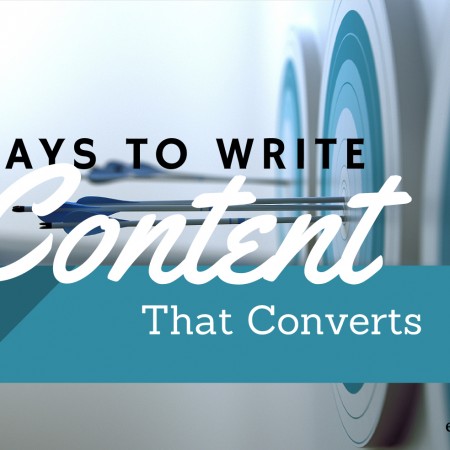A Guide: 37 Ways To Write Content That Converts
Creating content that converts is something every single website and business owner wants. You want people to come to your site, read your content, and click links to buy services or products. However, you might find it difficult to create content that converts your visitors into leads. I want to share some excellent ways that you can ensure you get great content that will convert your readers into clients, as well as keeping them for the long-term. Let’s take a look at the various aspects of content and specific points within each that can help you craft expert content that helps to generate leads. I. Blogging Blogging is an important aspect of any online campaign because it can bring in visitors and convert them quickly. You need to make sure you add a blog to your website to help generate engagement with your client base, as well as creating something that directs people to the rest of your site. You can do a number of things with a blog, and I am going to look at some of the elements you need to consider when blogging. 1. Use WordPress Only for Blogging. WordPress is a great blogging tool that can help you get some powerful results. There are many reasons why I think this is the best to use for your blogging needs. Some of the reasons are that it is SEO friendly, you can have a great blog design, and WordPress has been around long enough to be a trusted blogging resource. I would suggest using WordPress only for your blogging purposes, but you can use it for your static website, as well. They have a great selection of SEO plugins that help you get the most out of your blog, and so much more. Take a look at their blog platform to see just how easy it is to use and which aspects will benefit your business’s site. 2. Optimize Every Single Post. When you use WordPress, make sure that you optimize every post. WordPress makes it easy for blogs to be optimized to their fullest potential, and you need to take advantage of that. In order to get great optimization, do keyword research and use your low competition keywords in your posts. Make sure you optimize any and every image you use and select a good link name to use for the blog. How can you optimize every single aspect of a blog post with WordPress? I am going to look at that in my next point. 3. Use SEO Plugins On WordPress. As I mentioned earlier, one of the best parts of WordPress is the ability to use SEO plugins to optimize your blog further. There are several great plugins out there, but you need to choose the ones that will benefit you the most. WP Beginner highlights some of the latest SEO plugins you can use such as WordPress SEO by Yoast, SEMRush, and Google Keyword Planner. Take a look at the others listed to find some that can help your blog! You can also choose other plugins that aren’t specifically for SEO; just choose wisely and only choose the ones that will help your site and blog. 4. Use Big, Awesome, Colorful Adjectives in Your Headers. Your headlines and headers are crucial to convincing people to click and read through your blogs. When you create headlines or headers, make sure that you use amazing adjectives that capture attention. As you can see, I used a few in this header, illustrating how powerful, excellent adjectives can make a header. If you are trying to come up with great headlines or headers, you can follow a few suggestions of some of the hottest headlines out there to get started. 5. Use Action Words in Your Headers. Action words in headers are just as important as colorful adjectives because they convince readers to do something as they read. You can use action words in all of your headers, or you can wait until you create your call to action. Whichever way you choose, just keep in mind that you need to convince people to do something more than just reading your post. You can also do a mix of action words in a few headers throughout your blog and at the end for your call to action, which can be quite powerful. 6. Do a Controversial Blog Every Now and Then. Get your readers to sign up for something or go to a page by sharing a similar hatred or anger for something. Humanity is interesting and weird, isn’t it? We tend to do more when we connect with something, and many times that can be something we all feel strongly about and stand against. For example, how many people were willing to do whatever it took to stop the process of major corporations being able to take over the Internet? Several people and it was something that made all Internet users quite angry. When something like Net Neutrality comes up, you can use that as a way to write a blog and get people to act, no matter what the item is. You can also utilize trends like #WheresNatasha or other trends that have people angry or upset about something. 7. Do an Occasional Blog that Revolves Around Humor. Along with focusing on a controversy, focusing on humor is another way to get people to open up their wallets and buy your product. People love to laugh, and if you can make them laugh they will be more willing to buy items or services from you. Always make sure you are following some basic guidelines for using humor in your blog to ensure you have an impactful piece. A few things to remember are to be respectful, know your audience, and stay true to your specific brand. Once you incorporate humor, you will start to see many of your visitors starting to turn into leads. 8. Write Fun, Exciting Blogs On Seasonal Topics. When you … Read more


